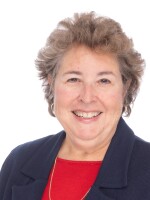DON GONYEA, HOST:
When officials in Charlottesville, Va., voted to remove Confederate statues like those Generals Robert E. Lee and Stonewall Jackson, the city came under attack by white supremacists. In fact, those Civil War memorials are protected by state law, so they remain in city parks. But as Sandy Hausman with member station WVTF reports, another work by the same artists may soon be taken down.
(SOUNDBITE OF TRAFFIC SOUNDS)
SANDY HAUSMAN, BYLINE: The intersection of Main Street and McIntire is a busy one, marked by a statue erected in 1919. It depicts native sons Meriwether Lewis and William Clark viewing the Pacific Ocean for the first time. Crouching behind them in a position some view as cowardly is the Native American woman Sacagawea.
DUSTINA ABRAHAMSON: It depicts our ancestor as if she was a dog going along on the trip.
HAUSMAN: Dustina Abrahamson came here from Idaho with her sister and mother, a great-great-great niece of Sacagawea. They recently told city council the teenage guide who traveled with Lewis and Clark knew the edible and medicinal plants that could keep them strong. When one of their boats capsized, she dove into the river to save their priceless journals. And Willow Abrahamson said Sacagawea's linguistic and cultural knowledge may have saved lives.
WILLOW ABRAHAMSON: That would have been viewed as a war party, a group of men. If it wasn't for Sacagawea showing Lewis and Clark how to communicate with these other tribes in a diplomatic way, I do not think they would have made it.
HAUSMAN: Her aunt, Emma George, knows the statue installed in 1919 reflects the attitudes of its time. But a hundred years later, it's still painful.
EMMA GEORGE: And this morning, I went out there to look at that statue. It did not make me feel good at all.
HAUSMAN: It's not likely sculptor Charles Keck meant to insult Sacagawea. In fact, he was the one who suggested including her. But the man who commissioned the statue wanted to glorify locals Lewis and Clark. Ball State University historian Doug Seefeldt reads what Keck had to say on the subject.
DOUG SEEFELDT: The guide Sacagawea is at their side a little to the rear so that she shall not compete too much in the composition with Lewis and Clark. By making her look down, I have tried to suggest that they were on a high prominence, and she was more interested in the immediate surroundings and not aware of what was in the minds of the explorers.
HAUSMAN: Seefeldt thinks it would be a mistake to scrap the sculpture.
SEEFELDT: It's a very valuable piece of our cultural history that gives us a great lesson about what people thought in 1919 about a Native American woman, for example.
HAUSMAN: But he likes the idea of putting it in a place where people can study it and learn its history. Enter Alexandria Searls, who runs a small museum called the Lewis & Clark Exploratory Center. She would welcome the statue and the chance to tell visitors just how brave and inquisitive Sacagawea was.
ALEXANDRIA SEARLS: She took initiative. She wanted to see the world. Certainly, the expression on her face is not fearful. The expression is one of curiosity to me.
HAUSMAN: After months of bitter fights about Civil War monuments, city council quickly agreed to take this statue down and is now looking at cost to move and replace it. Charlottesville's African American mayor said she would prefer to leave Lewis and Clark out of a new monument since both came from slave-holding families. Instead, it could focus on Sacagawea and perhaps an enslaved man named York who was also part of the expedition.
For NPR News, I'm Sandy Hausman in Charlottesville. Transcript provided by NPR, Copyright NPR.


